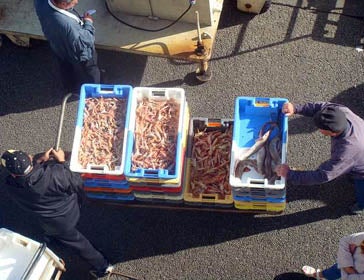Learn more: Managing fisheries
 The fishing sector requires comprehensive regulation based on the environment’s capacity to produce resources in order to prevent overexploitation and foster long-term responsible fishing activities.
The fishing sector requires comprehensive regulation based on the environment’s capacity to produce resources in order to prevent overexploitation and foster long-term responsible fishing activities.
The creation of marine protected areas facilitates the adoption of measures to manage the fishing sector by establishing fisheries, quotas and fishing gear adapted to the physical and biological characteristics of each area. In addition, scientific and technological advances allow for the management of new activities.
Trawling destroys the foundations of life in the ocean, on which many fish species and other life forms depend; the habitat that feeds and protects them.
Industrial trawlers – vessels that drag heavy nets on the seabed – trap everything in their path, not only fish, ripping out and destroying deep-sea sponge and coral habitats that can take centuries to recover.
Large-scale industrial fishing damages marine ecosystems and devastates fish populations to obtain short-term profits while destroying traditional fishing communities around the world. Although it constitutes only 10% of the total European fleet, trawlers catch the highest volume of threatened species, have the highest levels of discards, cause the collapse of fishing stocks and seriously damage delicate marine ecosystems.
European trawlers do not only operate in EU waters. A significant number of European trawlers operate around the world, fishing in both third-country territorial waters and on the high seas. In fact, the trawl fleet continues expanding its activities into deeper areas as fishing methods become more sophisticated and traditional fishing grounds are depleted.
The new regulation 2371/2002 of the Common Fisheries Policy, currently undergoing revision, requires the EU to protect the marine environment and reduce the impacts of fishing on its ecosystems. Oceana believes that important measures can be


